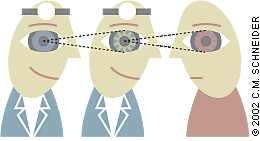
Has your enthusiasm for medicine begun to wane? Precepting may help improve your perspective.
Fam Pract Manag. 2002;9(2):68

Medicine is supposed to be more than just a career. It’s a calling, a lifelong humanitarian mission, a joyous healing art –right? After seven years of seeing patients day in and day out in private practice, I discovered that medicine had become routine. I was overwhelmed with administrative tasks and impatient with documentation guidelines. There were many days when I just didn’t enjoy going to work. I spoke to other physicians about my frustrations, only to find that they were experiencing the same feelings. I knew I needed a change, so I began to precept students. One of my partners precepted and another partner taught students studying to be physician assistants. They enjoyed this experience, so I thought I’d give it a try. It was exactly what I needed.
Having a student in my office made me see medicine in a different light. Medical students want to absorb everything. They’re excited by their first glimpse of an infected ear drum or a fundus of the eye with all of its vessels. What was mundane for me was new and interesting to them. It may have been just another patient with hypertension, but for my medical student it was an opportunity to try out patient-interviewing skills or to determine which medication would work best. On one afternoon, when the snow was falling and the patient load was light, I let my medical student put a cast on my nurse’s forearm.
Helping students helped me
I didn’t realize it at the time, but precepting helped me as much as I hoped it helped the students. For one, the students constantly kept me on my toes. I found myself reading and reviewing the medical literature more when I was precepting. Student questions prompted me to look up basic scientific facts or clinical guidelines that I had forgotten. It also reminded me to think about what I was doing rather than just going through the motions. Through precepting, the art of medicine became real to me again. My patients and office staff also enjoyed having the students around and mentioned what a nice break in routine they provided.
Some physicians resist precepting students because they think it would slow them down too much. I found that having a student start with one patient while I saw one or two others kept me on schedule. At the end of the day, my student and I would sit down to discuss the cases and catch up on any issues that needed clarification. My student would often remember elements of the encounter that I might have forgotten, such as the patient education talks I gave. As a result, my documentation skills improved.
Had it not been for precepting, I would probably still be practicing medicine, but not as happily as I am today. Precepting gave me the inspiration and direction I needed. Today, I work in academic medicine, spending half of my time seeing patients and supervising residents and the rest of my time with medical students in their clerkship year. Now that I am in the position of sending students out to family physicians in the community, I get a lot of feedback and am not surprised to find that other physicians’ experiences generally match my own.
The precepting experience rekindled the excitement of patient care and helped me recall why I originally went into medicine. It showed me that medicine isn’t simply about proper documentation, drug formularies or HMO referrals.
I would certainly advise any physician who feels the way I did to try precepting. It isn’t for everyone and it certainly isn’t a panacea for all of medicine’s woes, but teaching may help you focus your energy in a more positive direction. Imparting knowledge and experience to the next generation of physicians so they are better prepared for practice is one way we can help our profession and ourselves.